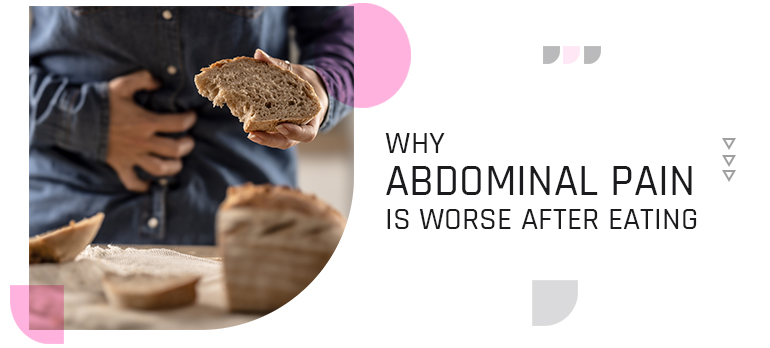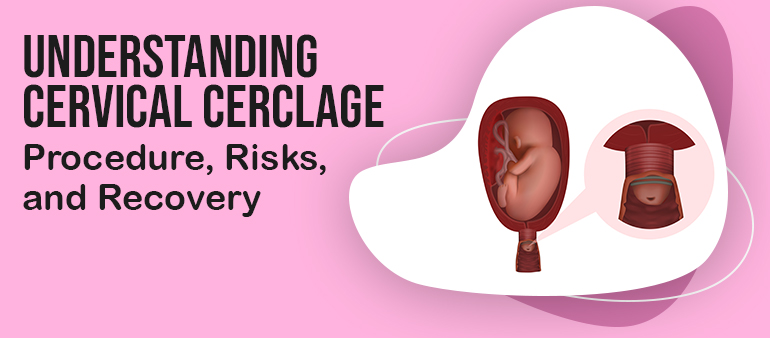
Why Abdominal Pain is Worse After Eating
Abdominal pain after eating is a common complaint that many individuals experience at some point in their lives. It can range from mild discomfort to severe pain due to various factors. Understanding the causes of abdominal pain after eating is crucial in order to identify any underlying health issues and seek appropriate treatment. This article aims to provide a comprehensive overview of the different causes of abdominal pain after eating, as well as tips for prevention and management.
Understanding the digestive process
To understand why abdominal pain may occur after eating, it is important to have a basic understanding of how the digestive system works. The digestive procedure begins in your mouth where the food particles break down into smaller pieces while chewing. It will then mix with saliva. It then travels down the oesophagus and enters the stomach, where it further breaks down by stomach acid and enzymes.
From the stomach, the partially digested food moves into the small intestine, where nutrients absorb into the bloodstream. The remaining waste then passes into the large intestine, where water absorbs leading to stool formation. Finally, the waste reduces from the body through the rectum and anus.
Causes of abdominal pain after eating
Several factors can contribute to abdominal pain after eating. These include overeating, food intolerances and allergies, acid reflux and heartburn, gallbladder disease, irritable bowel syndrome (IBS), inflammatory bowel disease (IBD), pancreatitis, peptic ulcers, gastrointestinal infections, and stress.
Overeating and abdominal pain
Gender Age Range Frequency of Overeating Frequency of Abdominal Pain
- Male 18-25 2-3 times a week Once a month
- Female 26-35 Once a week 2-3 times a month
- Male 36-45 4-5 times a week Once a week
- Female 46-55 2-3 times a month Once a week
One common cause of abdominal pain after eating is overeating. When we consume large quantities of food in one sitting, our stomach stretches to accommodate it. This stretching can cause discomfort and pain in the abdomen. Additionally, overeating can lead to indigestion and acid reflux, further exacerbating the symptoms.
To prevent overeating and subsequent abdominal pain, it is important to practice mindful eating. This involves paying attention to your body's hunger and fullness cues, eating slowly, and stopping when you feel satisfied but not overly full. It can also be helpful to eat smaller, more frequent meals throughout the day rather than large meals.
Food intolerances and allergies
Food intolerances and allergies can also cause abdominal pain after eating. There can be food intolerances when your body find it difficult to digest certain foods such as lactose or gluten. This can lead to symptoms such as bloating, gas, and abdominal pain. Food allergies, on the other hand, involve an immune response to specific foods, which can cause more severe symptoms, including abdominal pain.
Common food intolerances that can cause abdominal pain after eating include lactose intolerance, gluten intolerance (celiac disease), and fructose intolerance. Common food allergies that can cause abdominal pain include allergies to peanuts, tree nuts, shellfish, and eggs.
Acid reflux and heartburn
Acid reflux happens when the stomach acid reaches the esophagus and leads to burning sensation in the chest. It is what you call heartburn. This can also lead to abdominal pain after eating, as the acid irritates the lining of the stomach and oesophagus.
To manage acid reflux and prevent abdominal pain, it is important to avoid trigger foods such as spicy or fatty foods, caffeine, alcohol, and citrus fruits. Eating smaller meals and avoiding lying down immediately after eating can also help reduce symptoms.
Gallbladder disease and abdominal pain
Gallbladder disease is another potential cause of abdominal pain after eating. The gallbladder is a small organ which remains beneath your liver for storing bile, a substance produced by the liver to aid in digestion. When the gallbladder develops gallstones or gets inflammed, it can cause abdominal pain that is often triggered by eating fatty or greasy foods.
Symptoms of gallbladder disease include abdominal pain in the upper right quadrant, nausea, vomiting, and bloating. Treatment options may include medication to dissolve gallstones, surgical removal of the gallbladder, or dietary changes to reduce fat intake.
Irritable bowel syndrome and abdominal pain
Irritable bowel syndrome (IBS) is a chronic condition that affects the large intestine and can cause abdominal pain after eating. You do not know the exact cause of IBS though it involves a combination of factors, including contradictions of abnormal muscle in the intestines, an increase in sensitivity to pain, and changes in the gut microbiome.
Symptoms of IBS can vary but often include abdominal pain or cramping, bloating, gas, and changes in bowel habits such as diarrhoea or constipation. Treatment options for IBS may include dietary changes, stress management techniques, and medication to alleviate symptoms.
Inflammatory bowel disease and abdominal pain
Inflammatory bowel disease (IBD) is a chronic condition that involves inflammation of the digestive tract. There are two main types of IBD: Crohn's disease and ulcerative colitis. Both conditions can cause abdominal pain after eating, as well as other symptoms such as diarrhoea, rectal bleeding, weight loss, and fatigue.
Treatment for IBD typically involves a combination of medication to reduce inflammation and manage symptoms, as well as dietary changes to alleviate discomfort. In some cases, surgery may be necessary to remove damaged portions of the digestive tract.
Pancreatitis and abdominal pain
Pancreatitis is inflammation of the pancreas, a gland located behind the stomach that produces enzymes to aid in digestion. When the pancreas becomes inflamed, it can cause severe abdominal pain that is often worse after eating.
Symptoms of pancreatitis may also include nausea, vomiting, fever, and rapid heartbeat. Treatment for pancreatitis typically involves hospitalization, intravenous fluids, pain medication, and dietary changes to rest the pancreas.
Peptic ulcers and abdominal pain
Peptic ulcers are open sores that develop on the lining of the stomach or the upper part of your small intestine. They can be caused by a bacterial infection called Helicobacter pylori, long-term use of nonsteroidal anti-inflammatory drugs (NSAIDs), or excessive alcohol consumption. Peptic ulcers can cause abdominal pain after eating, as well as other symptoms such as bloating, heartburn, and nausea.
Treatment for peptic ulcers may involve medication to reduce stomach acid production, antibiotics to treat H. pylori infection, and lifestyle changes such as avoiding trigger foods and reducing stress.
Gastrointestinal infections and abdominal pain
Gastrointestinal infections, also known as stomach bugs or food poisoning, can cause abdominal pain after eating contaminated food or water. These infections are typically caused by bacteria, viruses, or parasites and can lead to symptoms such as diarrhea, vomiting, fever, and abdominal cramps.
Treatment for gastrointestinal infections usually involves rest, hydration, and over-the-counter medications to alleviate symptoms. In severe cases or if the infection is caused by a parasite, prescription medication may be necessary.
Stress and abdominal pain after eating
Stress can have a significant impact on our digestive system and can contribute to abdominal pain after eating. When we are stressed, our body releases stress hormones that can affect the functioning of the digestive organs and lead to symptoms such as abdominal pain, bloating, and changes in bowel habits.
To manage stress and prevent abdominal pain after eating, it is important to incorporate stress management techniques into your daily routine. This may include activities such as exercise, meditation, deep breathing exercises, or engaging in hobbies that help you relax.
Abdominal pain after eating can be a distressing symptom that can significantly impact a person's quality of life. It is important to seek medical attention if the pain persists or is accompanied by other concerning symptoms. By understanding the various causes of abdominal pain after eating, individuals can work with healthcare professionals to identify the underlying cause and develop an appropriate treatment plan. Remember, everyone's experience with abdominal pain after eating may be different, so it is crucial to consult with a healthcare professional for an accurate diagnosis and personalized treatment approach.
FAQs
What causes abdominal pain after eating?
Abdominal pain after eating can be caused by a variety of factors, including indigestion, food allergies or intolerances, acid reflux, ulcers, gallstones, and pancreatitis.
What are the symptoms of abdominal pain after eating?
Symptoms of abdominal pain after eating can include bloating, nausea, vomiting, diarrhoea, constipation, and a feeling of fullness or discomfort in the abdomen.
How can I prevent abdominal pain after eating?
To prevent abdominal pain after eating, it is important to eat slowly and chew your food thoroughly, avoid foods that trigger your symptoms, and maintain a healthy diet and lifestyle.
When should I see a doctor for abdominal pain after eating?
You should see a doctor for abdominal pain after eating if your symptoms are severe or persistent, if you have blood in your stool or vomit, if you have difficulty swallowing, or if you experience sudden, intense pain.
How is abdominal pain after eating diagnosed?
Abdominal pain after eating is diagnosed through a physical exam, medical history, and diagnostic tests such as blood tests, stool tests, endoscopy, or imaging tests like X-rays or CT scans.
What are the treatment options for abdominal pain after eating?
Treatment options for abdominal pain after eating depend on the underlying cause of the pain and may include medication, dietary changes, lifestyle modifications, or surgery in severe cases.
